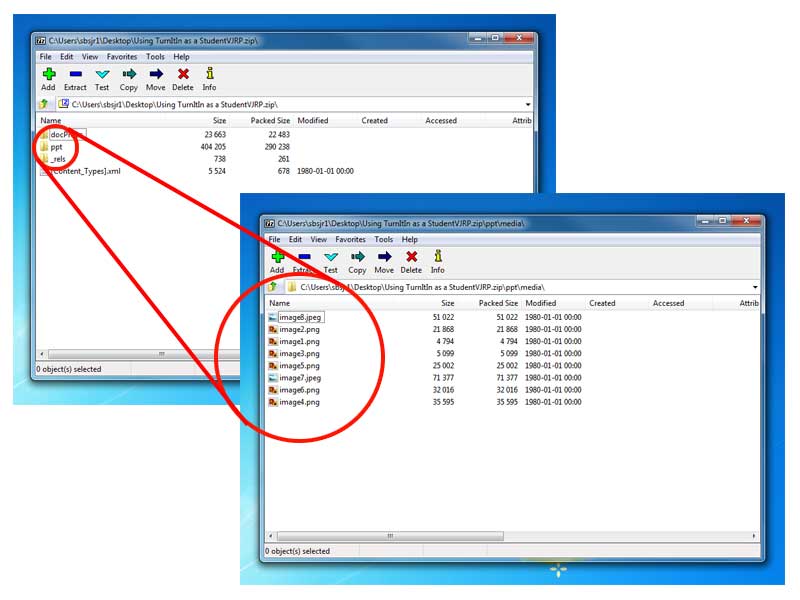Zip files can be used to combine and compress documents to be emailed but the .zip extension can also be used to deconstruct Office documents.
Why would you want to deconstruct an Office file?
Most people will have no reason to deconstruct a file in to its component parts on a day to day basis, however it is useful if you wish to extract the images from a PowerPoint, Word document or convert an Excel file over to a .xml file for web use.
This effectively means that all the images are stripped out and saved in a folder as the original jpegs, ready to be re-used and re-purposed. If you have videos embeded from YouTube it also allows you to interrogate the .xml file for all the pages and find the link to any video you may have lost the link to. It does mean wading through code to find it, but once you know what you are looking for it’s a quick way to find the links to relevant content.
Zipping a PowerPoint file.
- Make a copy of the file you wish to deconstruct
- Change the extension from .pptx to .zip
- Create a new folder
- Open the .zip file you have just created and copy the contents over to the new folder
You can now look at the component parts of your PowerPoint. All the images will be found in a folder called ‘media’, usually in a folder with the name of the document, ppt or word.






